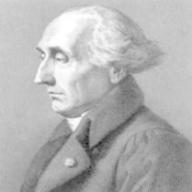What is the actual value of nucleus-electron distance in a hydrogen atom?
I can't obtain a value of 13.6eV as ionization energy when I put radius = 1A (10^-10 m) into calculation.
Ionization energy
2011-01-30 8:40 pm
回答 (1)
2011-01-31 1:58 am
✔ 最佳答案
The relation between the energy E and radius of the ground state electron orbit in a hydrogen atom (which is more or less taken to be the radius of a hydrogen atom) is given by ,E = -ke^2/2a
where a is the radius of the ground state electron orbit
e is the electronic charge
k is a constant (= 9x10^9 N-m^2/C^2)
hence, a = ke^2/2E
using E = 13.6 eV = 13.6e J
a = (9x10^9)e^2/2(13.6e) m = 5.3 x 10^-11 m = 53 pm (or 0.53 A)
[ 1 pm, picometre = 10^-12 m]
The 53 pm is the Bohr radius. The actual nuceus-electron distance (or atomic radius) is somewhat slightly different from this value, as the position of electron is not precisely fixed in qunatum mechanical theories. The 1 A radius is just an approximation to the radius of a hydrogen atom.
You may wsih to read the information contained in the following web-page:
http://en.wikipedia.org/wiki/Bohr_radius
收錄日期: 2021-04-29 17:37:44
原文連結 [永久失效]:
https://hk.answers.yahoo.com/question/index?qid=20110130000051KK00457

